Have you ever signed up for a free trial, used a product, and then decided you couldn’t live without it? That’s product-led marketing in action! Unlike traditional marketing, which focuses on pushing a product through ads and promotions, product-led marketing puts the product at the center of growth. It allows new users to try the product and see its value firsthand.
Table of Contents
This approach has been a game-changer for SaaS companies and businesses that prioritize customer experience. By letting users interact with a product before making a purchase, companies can reduce the sales cycle, lower acquisition costs, and build long-term loyalty. So, how do product-led companies make this work? Let’s find out!
What is Product-Led Marketing?
Product-led marketing is a growth strategy where the product itself drives customer acquisition, engagement, and retention. Instead of relying on traditional advertising or aggressive sales tactics, businesses using this approach focus on delivering value through the product experience. By offering free trials, freemium models, or self-service onboarding, companies allow users to explore and realize the benefits of the product before making a purchase decision, increasing trust and adoption.
A key feature of product-led marketing is its emphasis on user experience and minimal friction. Businesses design products to be intuitive and easy to use, ensuring that customers can navigate them without needing external support. Features like guided tutorials, automated onboarding, and AI-powered recommendations help users maximize product value. Additionally, data-driven insights enable continuous improvements, optimizing user engagement and reducing churn rates over time, resulting in sustainable growth.
Also read: Understanding the New Product Development Process
Another advantage of this strategy is its potential for organic, exponential growth. Many product-led companies integrate virality into their offerings, encouraging users to invite others to collaborate or share. Platforms like Slack, Zoom, and Dropbox benefit from this approach, as their utility increases with more users. Businesses also leverage customer advocacy, community-driven content, and referral programs to build credibility. This user-centric approach ensures cost-effective marketing while fostering long-term customer loyalty.
How It Works:
- Users sign up and instantly gain access to the product.
- The marketing team creates useful content to guide them.
- The customer success team ensures they experience value quickly.
- The product itself encourages users to upgrade to paid plans.
- Satisfied users refer others, leading to organic growth.
By focusing on product experience, businesses build trust and increase the chances of converting free trial users into paying customers.
Also read: The Ultimate Guide to Product Marketing Strategies and Examples
The Core Principles of Product-Led Marketing Teams
1. They Make Decisions Based on Data
Product-led marketing teams rely on data to understand user behavior, track engagement, and improve the customer experience. They analyze metrics like activation rates, feature usage, and customer feedback to make smart decisions. By continuously testing and optimizing, they ensure their strategies are aligned with real user needs and market trends.
2. They Use the Product as Their Best Marketing Tool
Instead of relying on traditional advertising, these teams let the product do the talking. They ensure the product delivers value from the first interaction, making it easy for users to explore and benefit from its features. A great user experience leads to organic growth as happy customers recommend the product to others.
3. Their Strategies Align with Product Launches
Marketing teams in product-led companies work closely with product teams to plan and execute launches. Every new feature or update becomes an opportunity to attract and engage users. They craft messaging, create content, and build campaigns that highlight how new updates solve user problems, increasing product adoption and engagement.

4. They Recognize the Power of Free Users
Not all users will pay immediately, but free users can still bring value. They may refer others, provide feedback, or eventually convert to paying customers. Product-led marketing teams understand this and focus on creating an excellent experience for all users, knowing that free users can play a key role in long-term growth.
5. They Prioritize Adoption and Engagement
Getting users to sign up is only the first step. The real challenge is ensuring they actively use the product and experience its benefits. Product-led teams focus on smooth onboarding, in-app guidance, and helpful content to make sure users quickly see the value and keep coming back.
6. They Help Drive Customer Growth
Product-led marketing doesn’t just stop at acquiring users—it also focuses on expanding customer relationships. Teams encourage upgrades, additional purchases, and deeper engagement by showcasing advanced features and new use cases. By continuously educating and supporting users, they turn customers into long-term advocates.
Also read: What is a Product Marketing Framework?
Develop a Product-Led Marketing Model in 6 Simple Steps
1. Understand Your Users’ Problems Deeply
Your product should solve real problems, but to do that, you need to understand what your users struggle with. Talk to customers, study feedback, and analyze how they interact with your product. This will help you build better features and create marketing messages that connect with them.
2. Create Helpful Content That Solves Problems
Instead of just promoting your product, focus on creating content that helps users. Write blogs, guides, and tutorials that provide solutions to their pain points. If your content is genuinely useful, people will start trusting your brand, and your product will become the natural answer to their needs.
3. Build a Learning Hub for Users
Users don’t want to rely on customer support for every small issue. A well-organized knowledge base, FAQ section, or learning center makes it easy for them to find answers on their own. This improves user experience, reduces frustration, and keeps them engaged with your product.
4. Optimize for Search Engines
People turn to Google when they have a problem. If your content ranks well, they’ll find you first. Use the right keywords, structure your pages properly, and focus on user-friendly content. The easier it is to find your product online, the more likely you are to attract and convert potential customers.
5. Use All Reviews to Your Advantage
Positive reviews build credibility, but negative reviews can also help. Instead of ignoring bad feedback, address it openly and work on improvements. This shows potential customers that you care about user experience and are always working to make your product better.
6. Track the Right Performance Metrics
Don’t just focus on sign-ups or downloads. Track how users engage with your product—do they come back? Are they using key features? Metrics like activation rate, retention, and churn help you understand if your product is truly solving their problems. If users aren’t sticking around, it’s a sign that something needs to be improved.
Also read: Unveiling the Key Roles and Responsibilities of a Product Marketing Manager
Benefits of Product-Led Marketing
1. Lower Customer Acquisition Costs (CAC)
When a product is easy to use and people enjoy it, it can sell itself. Users will talk about it and invite others, so you don’t need to spend a lot of money on ads or salespeople. For example, Slack grew because users invited their teammates to join, and the product spread without needing expensive marketing campaigns.
2. Faster User Adoption
People like to try things out before buying. Offering a free trial or a basic version helps them test the product. Once they see how it works, they decide faster if they want to continue. For example, Trello lets people use its features for free, and they quickly see how useful it is for organizing tasks, leading to faster adoption.
3. Stronger Customer Retention
If a product works well and solves real problems, people will keep using it. A good product should make things easier for users, and they’ll keep coming back. Dropbox keeps users because its file-sharing system works smoothly across all devices, making it easy for users to keep their files safe and accessible, which keeps them loyal to the service.
4. More Organic Growth
When users are happy with a product, they share it with others. This helps the product grow without spending much on marketing. For example, Zoom grew because users invited their friends and colleagues to join meetings, which helped spread the word quickly. This natural growth happened because people enjoyed using the product and wanted others to try it too.
5. Easier Scaling Without Heavy Sales Efforts
With a product-led approach, companies can grow without needing large sales teams. If the product is easy to use, customers can sign up and start using it on their own. Calendly, for example, grew because users could set up meetings without needing help from customer support. This makes it easier for the business to scale without spending too much on sales efforts.
6. Better User Experience Leads to More Conversions
If a product is simple and solves real problems, users are more likely to pay for it. People enjoy using products that make their lives easier. Canva made design simple for everyone. As users saw how easy it was to use, many upgraded to the paid version for more features, showing how a good user experience can lead to more conversions.
7. Data-Driven Improvements
Product-led companies use data to improve their products. By tracking how users interact with the product, they can learn what works well and what needs to change. Spotify, for example, uses data from users’ listening habits to give personalized music recommendations. This helps the app stay engaging and makes users want to continue using it, keeping them subscribed.
Also read: 10 Creative Product Launch Ideas
Examples of successful product-led marketing
1. Google Drive
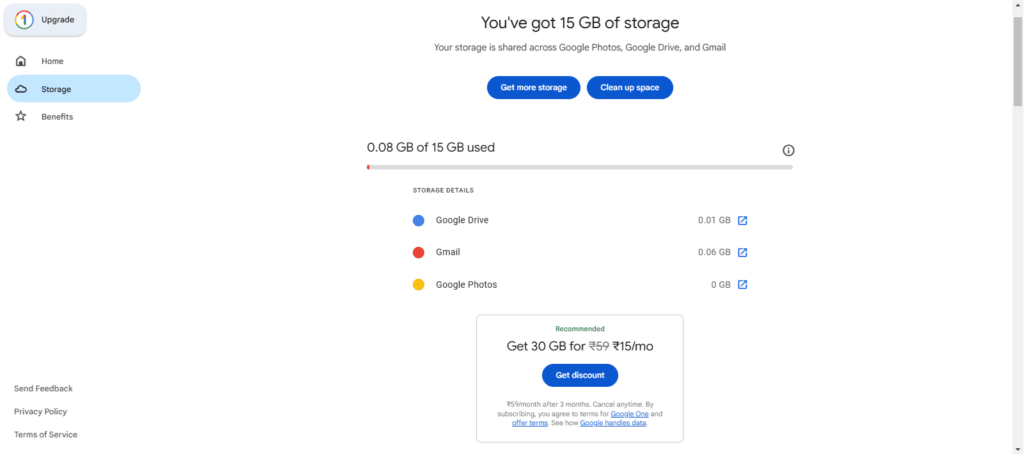
Google Drive offers 15GB of free cloud storage, enticing users with the convenience of storing and accessing files from anywhere. As users fill their free space, they upgrade to more storage and collaborative tools. Google Drive’s seamless integration with other Google products make it a go-to solution for both personal and business use.
2. Minecraft
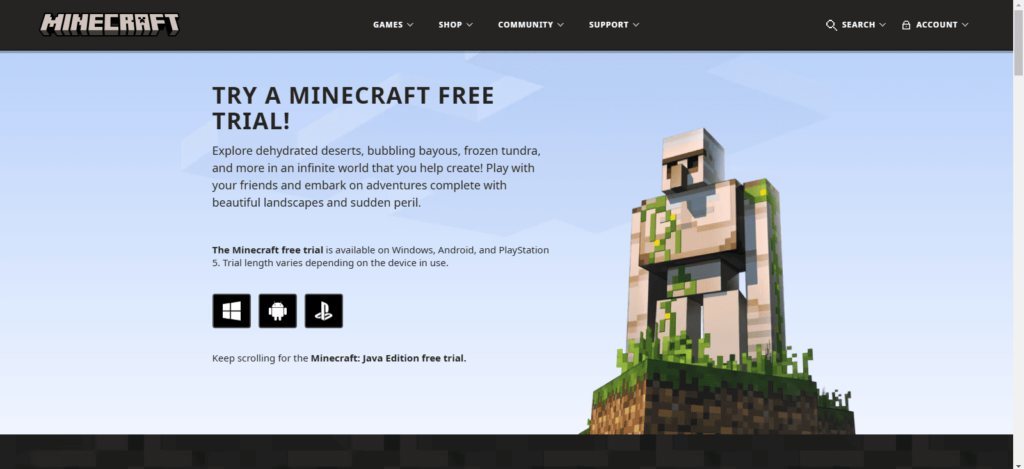
Minecraft’s success is rooted in its free demo, which showcased the game’s limitless creative potential. As users explored and built their own worlds, they were compelled to buy the full version. The engaging gameplay, constant updates, and community-driven features kept players hooked, turning it into one of the most successful product-led games.
3. Wix
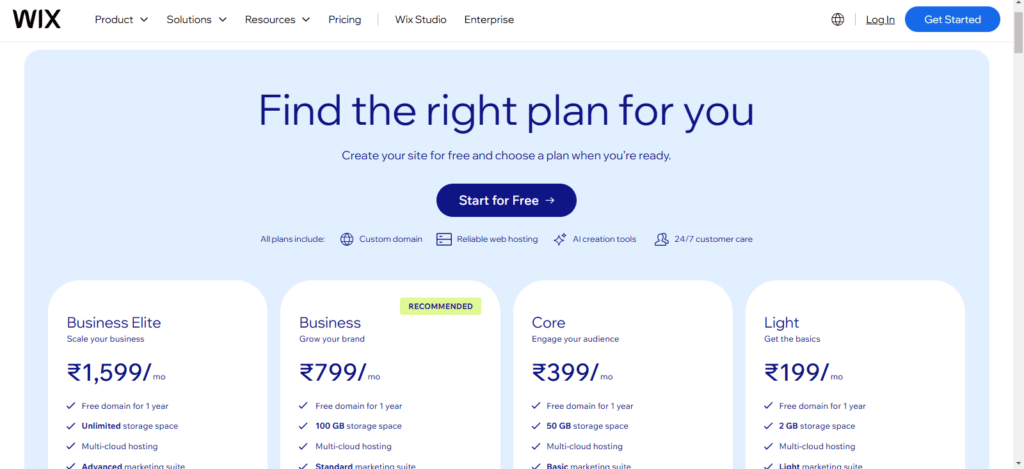
Wix made website creation accessible for all by offering a free drag-and-drop website builder. Users could easily design and launch websites without technical skills, and as they saw the platform’s value, many upgraded for custom domains, advanced features, and e-commerce capabilities. Wix’s freemium model led to massive adoption among individuals and businesses.
4. Adobe
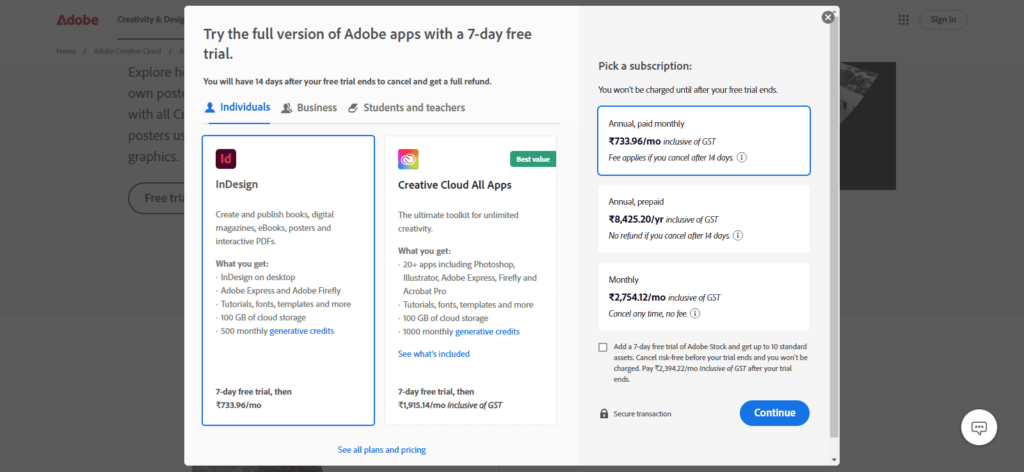
Adobe attracts users with a 7-day free trial for its full-featured apps like Photoshop, Illustrator, and Premiere Pro. This allows users to explore premium tools before committing to a subscription. By experiencing the full version, many users see the value and upgrade. This product-led marketing strategy helps Adobe convert trial users into long-term paying customers.
5. Spotify
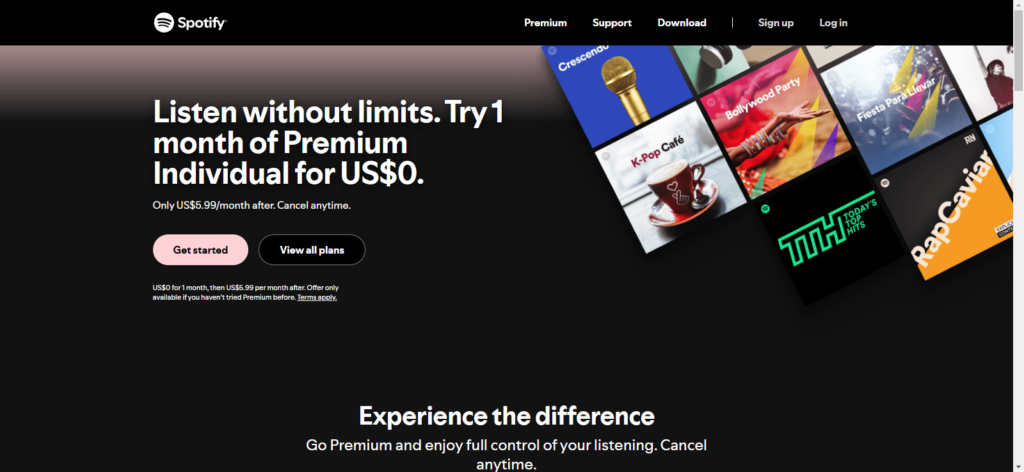
Spotify uses a product-led marketing approach by offering a free, ad-supported tier and a premium, ad-free experience. By allowing users to try the service at no cost, Spotify encourages them to upgrade to paid plans for a better experience. This strategy has helped Spotify convert free users to paying customers and maintain strong customer loyalty over time.
Conclusion
Product-led marketing is a powerful way for businesses to grow by letting the product sell itself. Instead of spending heavily on ads, companies focus on making their products easy to use, valuable, and enjoyable. When people love using a product, they are more likely to share it with others, helping the business grow naturally.
Many successful companies, like Netflix, Canva, and Grammarly, have used this approach to attract and keep customers. They offer free trials or basic versions of their products so users can try them before paying. If people find the product useful, they stay and even upgrade to paid plans.
This strategy works because it builds trust, improves user experience, and reduces the need for aggressive sales. Businesses that focus on making great products and helping users solve problems will see long-term success with product-led marketing.
FAQs: Product-Led Marketing
1. What is product-led marketing?
Product-led marketing is a strategy where the product itself is the main way to attract and keep customers. Instead of using big advertising campaigns, companies let users try the product for free or offer useful features. If people like it, they continue using it, recommend it to others, and even pay for more features.
2. How is product-led growth (PLG) different from sales-led growth (SLG)?
PLG focuses on the product to bring in customers. People try it, love it, and pay for premium features. SLG, on the other hand, relies on sales teams to find and convince customers to buy. PLG works well for online tools, while SLG is often used for expensive or complex products.
3. Why do companies use product-led marketing?
Companies use this strategy because it builds trust, reduces marketing costs, and attracts loyal customers. If users see value in the product, they continue using it and recommend it to others. This helps the business grow without spending too much on ads or sales teams.
4. What are examples of product-led marketing?
Some well-known companies that use product-led marketing include Netflix, Canva, Grammarly, and Google Drive. They offer free trials or basic features so users can experience the product before deciding to pay. If users like it, they upgrade to premium versions, helping the company grow.
5. How can a business start using product-led marketing?
To use product-led marketing, businesses should make their product simple, useful, and enjoyable. Offering free trials or limited free versions helps attract users. The key is to focus on solving problems for customers so they keep coming back and eventually pay for extra features.

